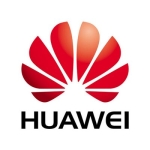NetApp is highly flexible. We can do things on the fly. Because the nodes are rock-solid, there is less downtime and maintenance. We don't have any downtime due to NetApp storage.
Our internal operations are rather static. We're a healthcare company, so we have the same product line. We don't have to fluctuate too much due to market pressure. The integration with VMware has streamlined the IT operations, where we can use vCenter to do half our BlueXP work.
One of the biggest challenges we had recently was SnapMirror. SnapMirror is rather old, but that shows how good it is. It hasn't been reinvented in so long. We're on-prem right now. I think hybrid integration with BlueXp to manage both storage types will greatly benefit us. We're not heavily involved in AI, but I am so happy that NetApp is with ARP and Cloud Insights.
We plan to expand our NetApp usage to include more AI and ransomware protections. I want to strengthen our security posture with MFA and multi-admin approvals. We want to get off VMware and go right to Kubernetes.
Our future investment will focus on cybersecurity. We've had partners who were attacked, infected, and went down. I won't give names. We weren't affected, but we were indirectly affected. We had to change how we communicated with them. It's coming from the top down that we all need to focus more on cybersecurity.
Unfortunately, cybersecurity throws a wrench into innovation. We only have so much money, tools, and people, but it's what you have to do. You can't just say that we're not going to do it, and we're going to develop a new product line.
We're not fully utilizing NetApp's Converge BlueXP, but it's a great help. It integrates on-prem and cold storage and provides disaster recovery. We'll see more benefits as it improves.
We implemented SnapCenter for SQL, which we provide to our customers for free. It provides hourly point-in-time recovery, which they weren't expecting, and we already had the license. They got it for free.
NetApp's price could be improved. All storage is expensive. NetApp is not cheap, but we can't return to anybody else now. We'd lose too much value. We'd be, reinventing ourselves.
We have used NetApp for 10 years.
We came from HPE and considered Dell EMC, but we're not in block storage anymore. We want the flexibility of NAS, and it wasn't hard to decide on NetApp.
It's come a long way, and we can train new employees that have never touched NetApp. They can get going in a week and start being administrators quickly using all the GUI tools.
We've had instances before where we were on block storage with VMware. And if it fills up or anything happens, you have downtime. NetApp now gives us more alerts, so we expand it on the fly. It will auto-expand on the fly. So I think that's definitely a big outcome.
I only made the decision at the technology level about whether it would fit into our stack and provide for our needs. I never got involved in the cost, so I don't know if cost was a deciding factor. When we adopted it 10 years ago, NetApp was a different storage creature than everybody else. It was an easier decision. If we wanted to stay with block storage, we could go with anybody else, and they were almost identical at the time.
I rate NetApp 10 out of 10.













